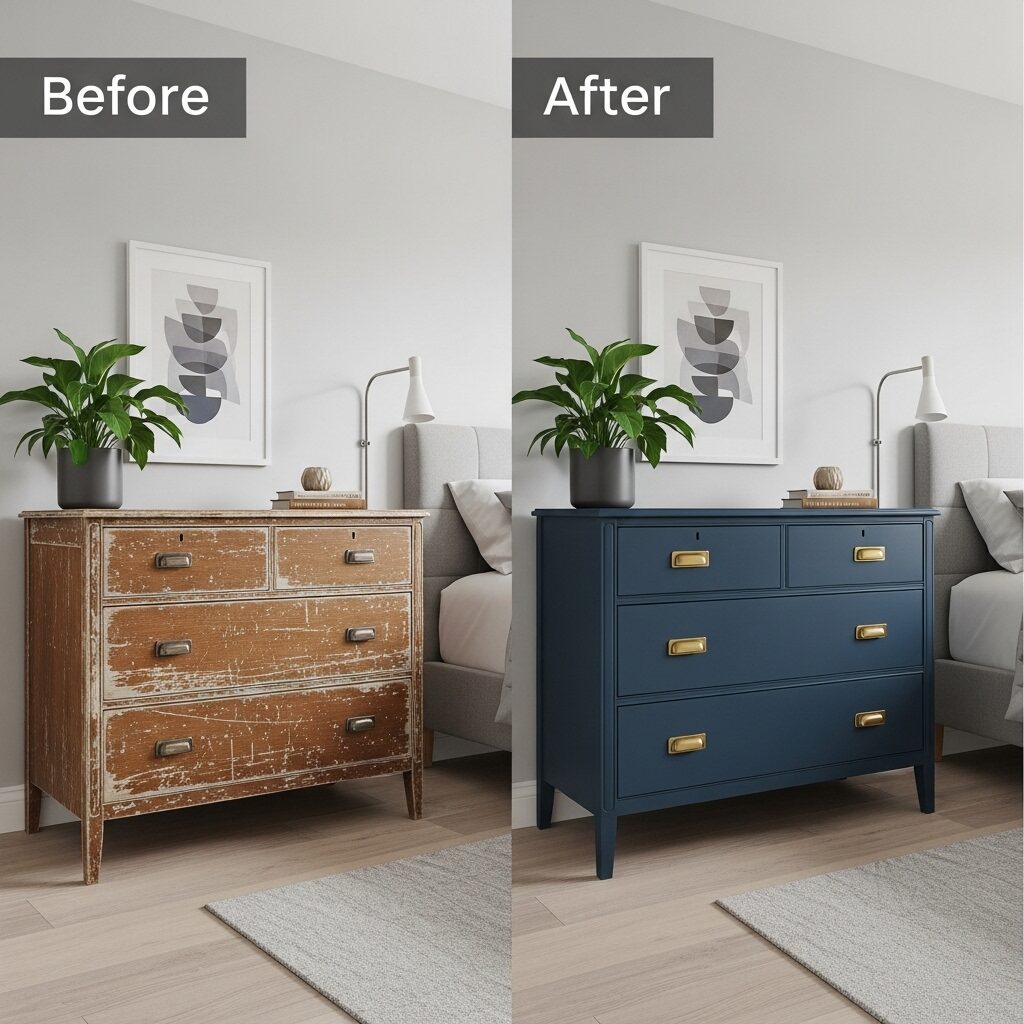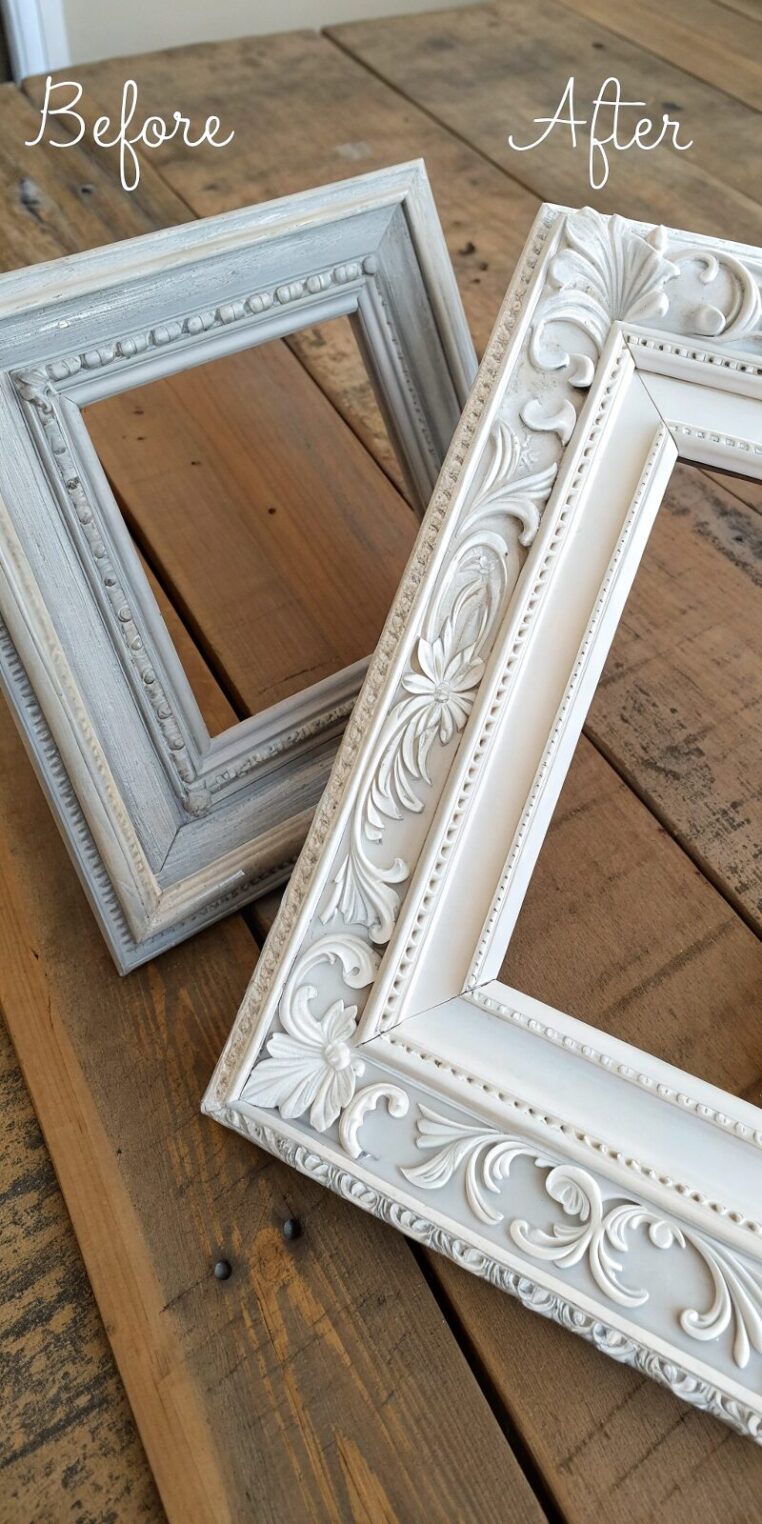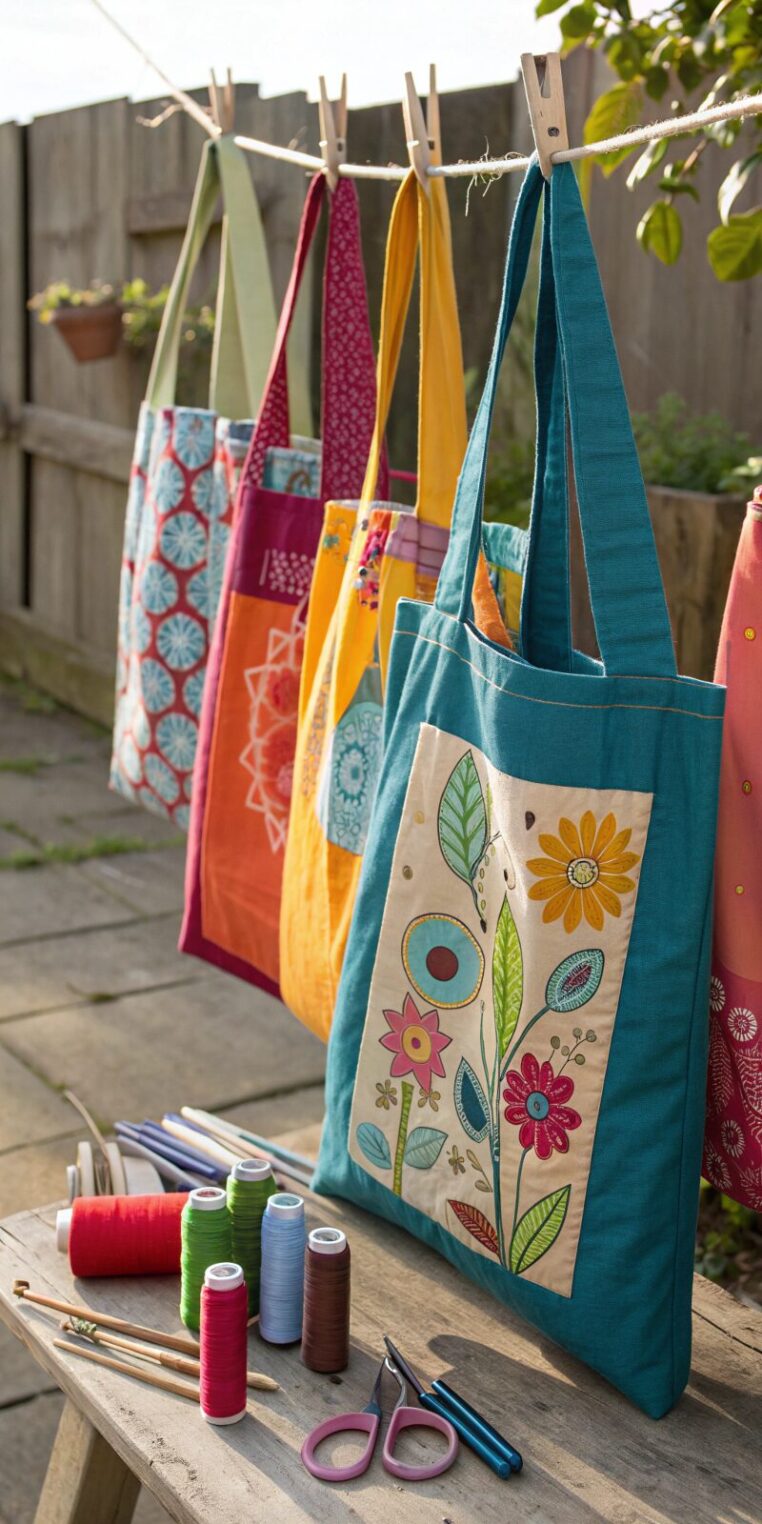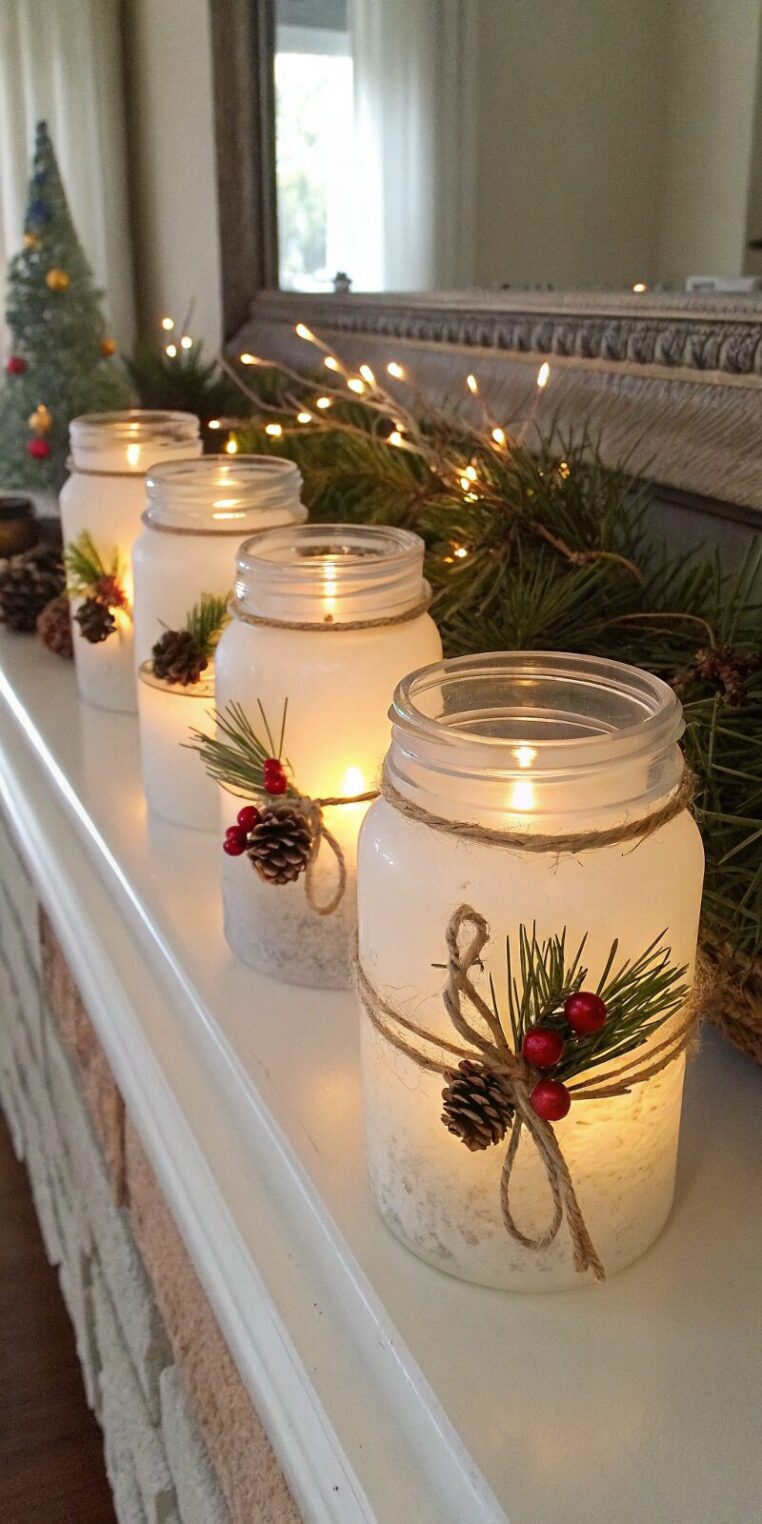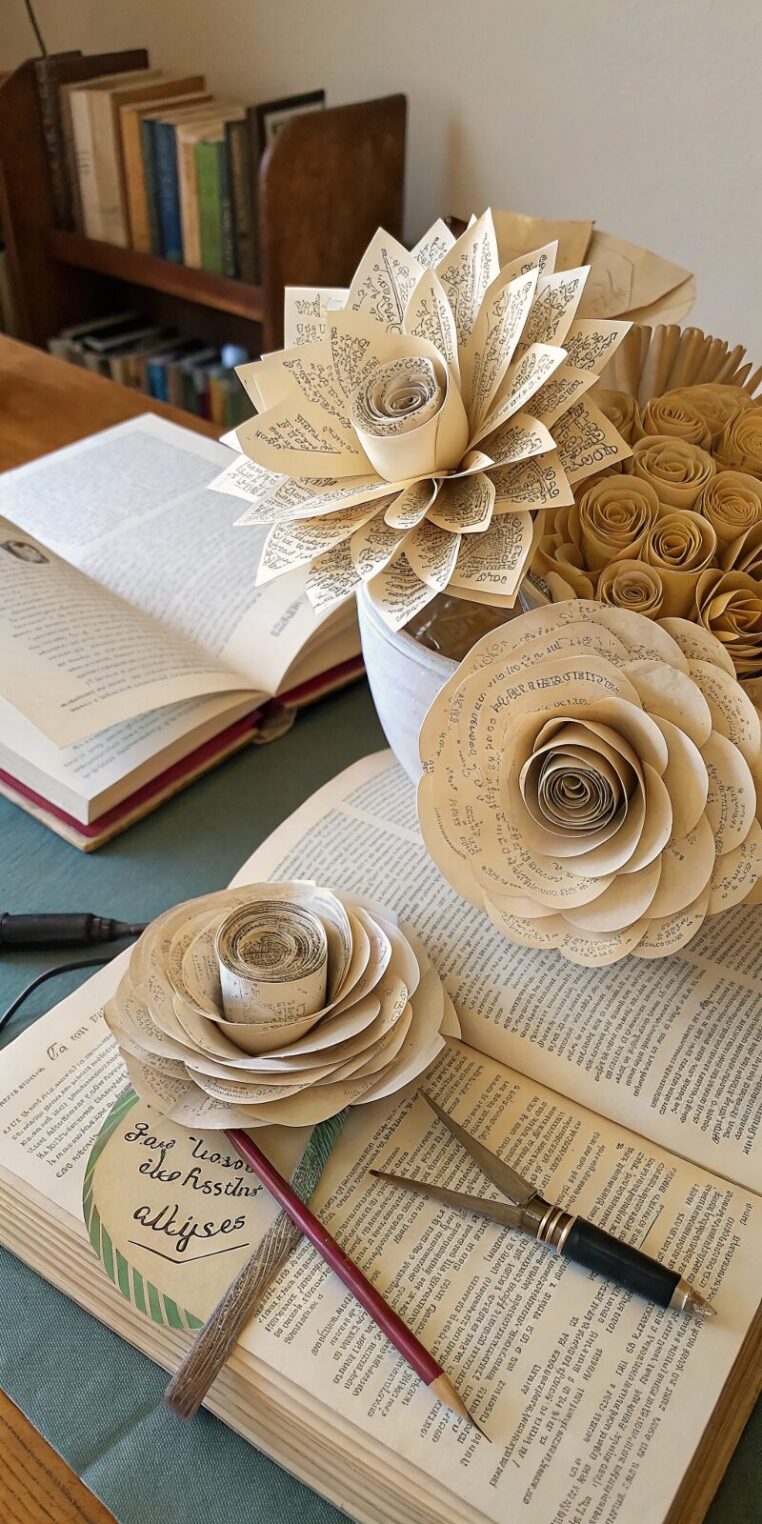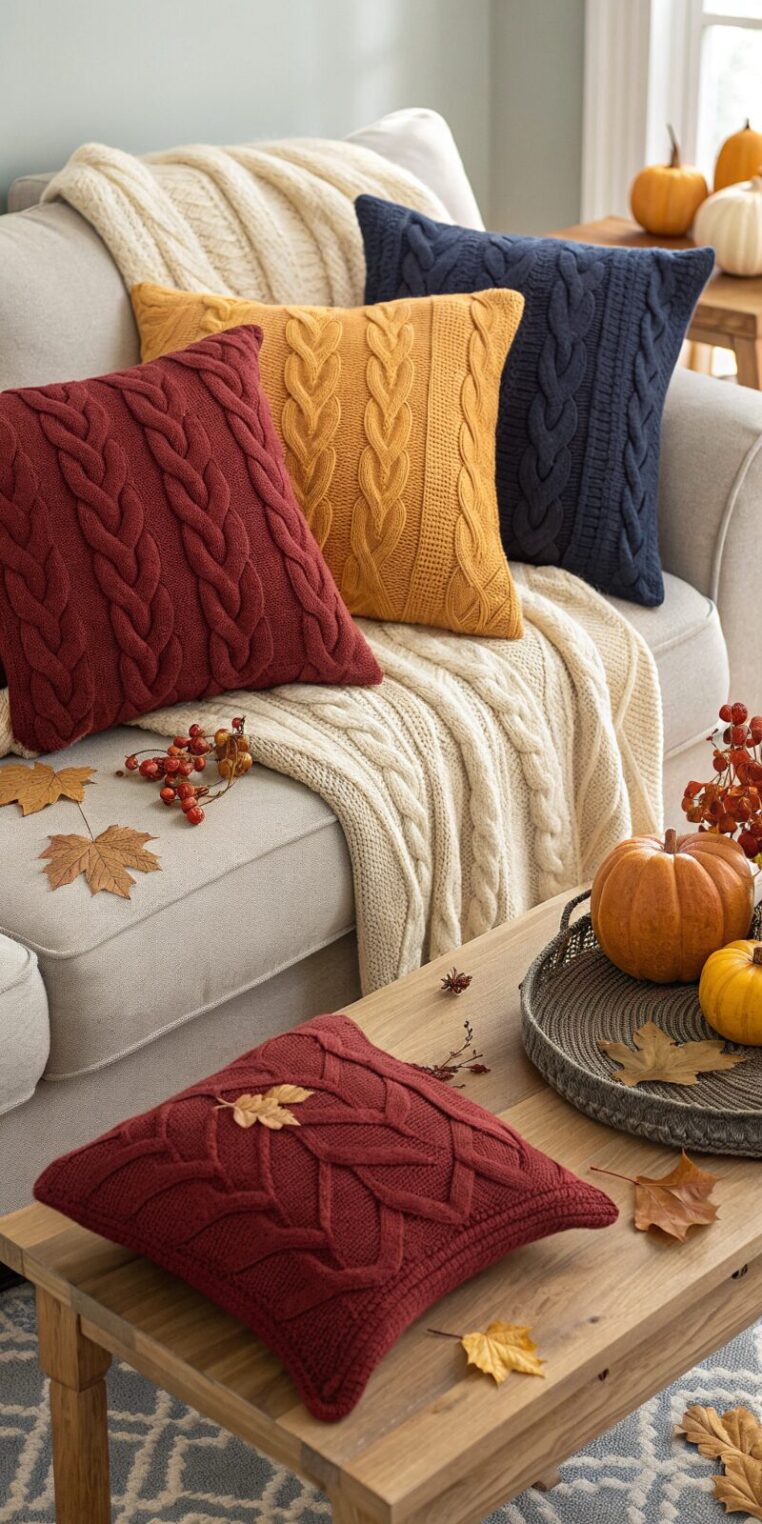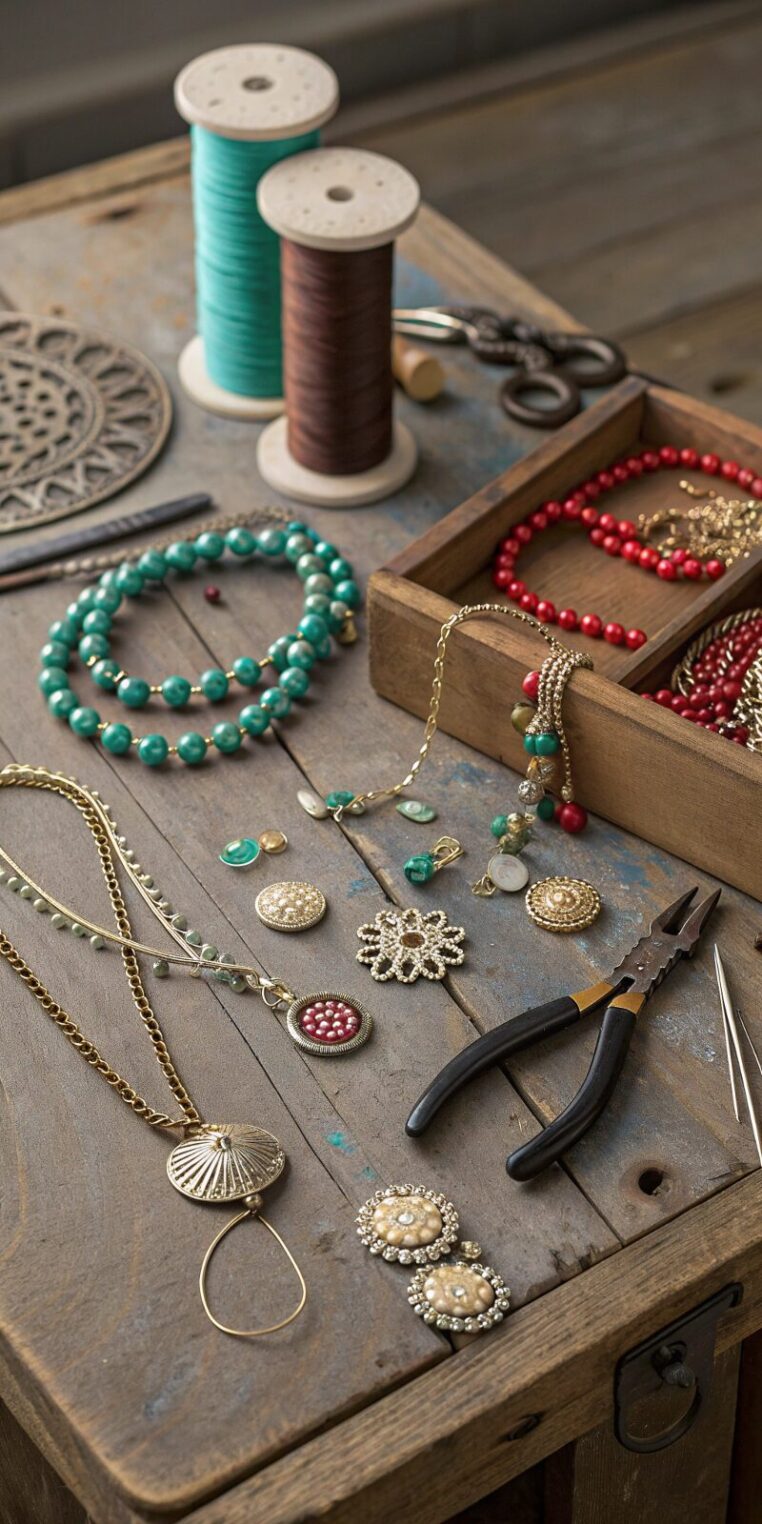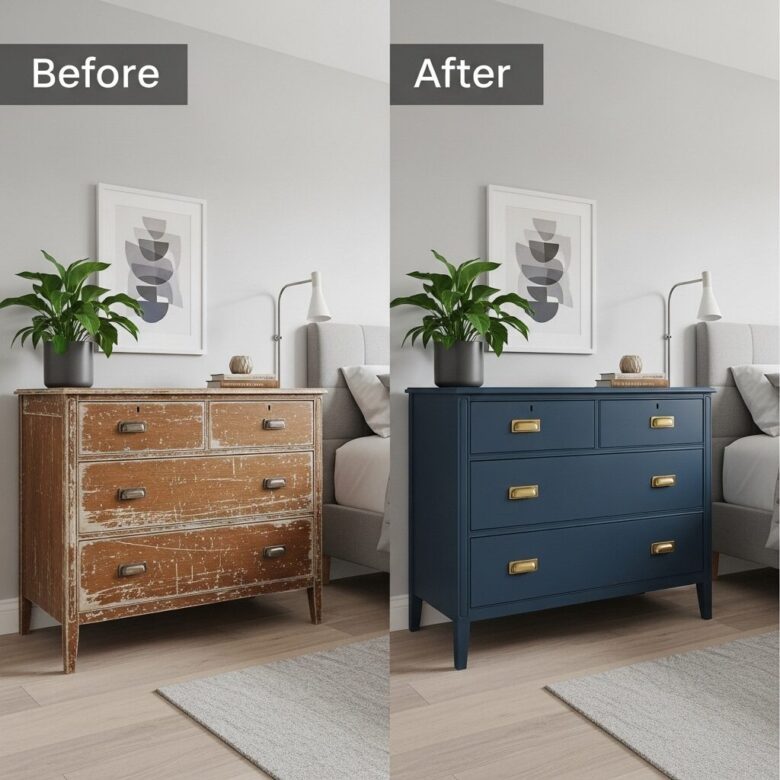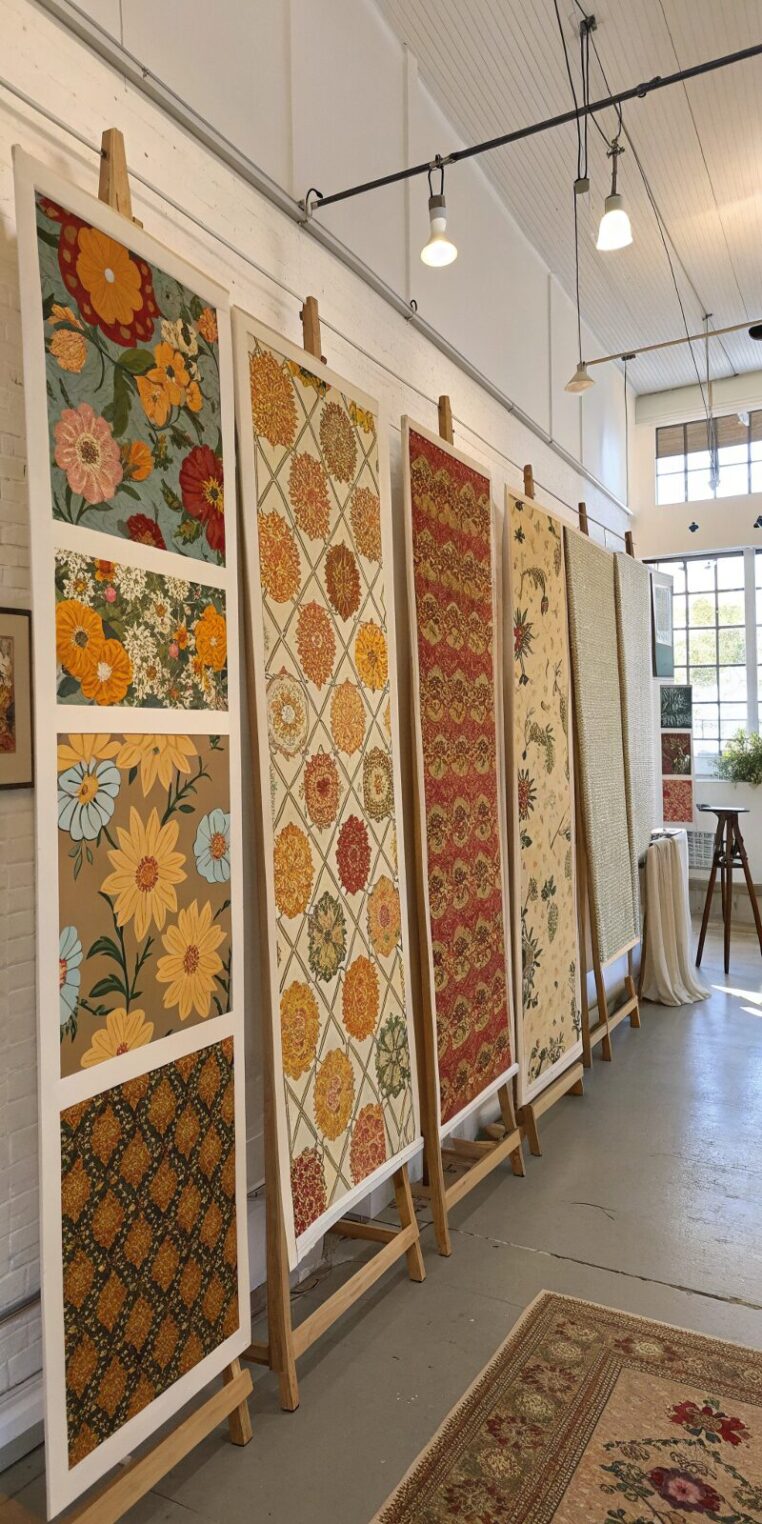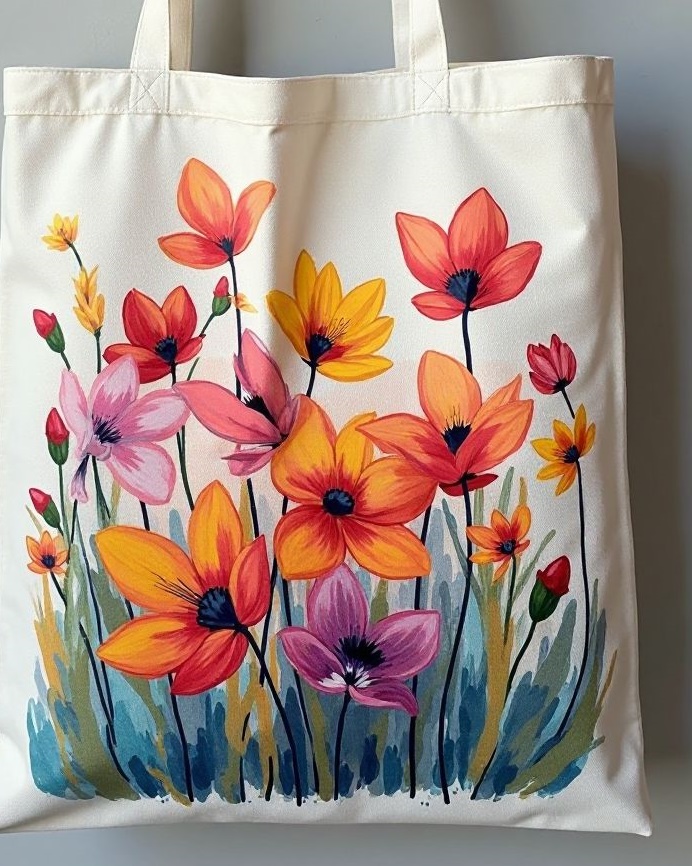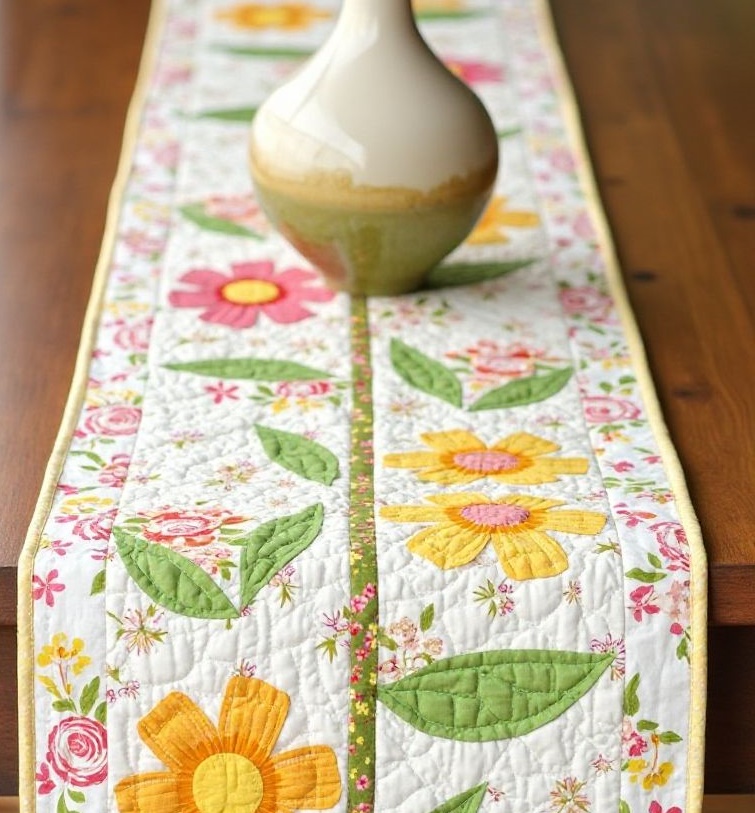Introduction: The Fun of Thrift Store Crafting
I’ve always been drawn to the treasure hunt that is thrift store shopping. There’s something magical about walking through aisles of forgotten items, each with its own story, waiting to be given new life. Over the years, I’ve discovered that thrift stores aren’t just places to find cheap clothes or household items – they’re goldmines for craft supplies and DIY projects.
My love affair with thrift store crafting began about five years ago when I was struggling to decorate my first apartment on a tight budget. I wandered into a local Goodwill with twenty dollars in my pocket and a head full of Pinterest dreams. What I found was better than any craft store: unique items with character, history, and potential. That day, I picked up an old wooden picture frame, some vintage books, and a collection of mismatched mugs. By the end of the weekend, I had transformed these forgotten treasures into stunning home decor pieces that my friends couldn’t believe came from thrift stores.
The beauty of thrift store crafting lies not just in the affordability – though saving money is certainly a perk – but in the sustainability aspect. Every item I rescue from a thrift store is one less thing ending up in a landfill. I’m giving these objects a second chance to be loved and appreciated, and there’s something deeply satisfying about that process.
Upcycled Picture Frame Makeover
One of my favorite thrift store finds is old picture frames. I’ve collected dozens over the years, and each one has become a canvas for creativity. The beauty of working with thrift store frames is that they often come with unique details, ornate corners, or interesting shapes that you simply can’t find in modern stores.
My go-to technique for frame makeovers involves chalk paint, which adheres beautifully to almost any surface without primer. I start by cleaning the frame thoroughly, then apply a base coat in a neutral color like cream or soft gray. Once dry, I add texture using techniques like dry brushing with a contrasting color or applying wax for an aged appearance.
One particularly memorable project involved a heavy, gold baroque-style frame I found for three dollars. It was gaudy and outdated, but I could see its potential. After painting it in soft white and distressing the edges, it became the perfect frame for a mirror in my bathroom. The transformation was so dramatic that guests often ask where I bought such a “expensive-looking” piece.
For those new to frame upcycling, I recommend starting simple. A coat of spray paint can work wonders, and adding elements like twine, fabric, or decorative paper can create stunning results. The key is to look past the current state and envision what the frame could become.
Painted Vintage Mugs for Decor
Vintage mugs are among my most frequent thrift store purchases. There’s something charming about their varied shapes, sizes, and original designs. While some people might use them for drinking, I’ve found they make incredible decorative pieces when given a creative makeover.
My technique involves using ceramic paint pens or acrylic paints specifically designed for dishware. I love creating themed sets – perhaps painting all the mugs in a cohesive color scheme with different patterns, or adding inspirational quotes in beautiful lettering. One project I’m particularly proud of involved painting a collection of white mugs with watercolor-style florals. They now sit on floating shelves in my kitchen, serving as both storage and art.
The process is meditative and rewarding. I start by sketching my design lightly with pencil, then carefully paint over the lines. After the paint dries, I cure the mugs in my oven according to the paint manufacturer’s instructions. This makes them dishwasher safe if I decide to actually use them for beverages.
What I love most about this project is how it allows me to create custom pieces that perfectly match my home’s aesthetic. No more settling for whatever’s available in stores – I can create exactly what I envision.
Repurposed Old T-Shirts into Tote Bags
The clothing section of thrift stores is a crafter’s paradise, especially when it comes to t-shirts. I’ve learned to look beyond stains or outdated designs and focus on the fabric quality and potential. Some of my most successful projects have involved transforming old t-shirts into practical tote bags.
The process is surprisingly simple and requires only basic sewing skills. I start by cutting off the sleeves and neckline, creating the bag’s opening. Then I cut fringe along the bottom hem and tie the pieces together to create a secure bottom. For a more polished look, I sometimes sew a proper seam instead of using the fringe method.
What makes these bags special is their unique character. A vintage band t-shirt becomes a conversation-starting grocery bag. A sports team shirt transforms into the perfect bag for game day. I’ve made bags from everything from tourist souvenir shirts to corporate event tees, and each one tells a story.
The best part about this project is its practicality. In our increasingly eco-conscious world, having a collection of reusable bags is essential. When people compliment my bags and I tell them they’re made from thrift store t-shirts, they’re always amazed at how professional they look.
Decorating Thrifted Glass Jars
Glass jars are absolute treasures at thrift stores, and I never pass up a good collection. From mason jars to vintage apothecary bottles, these containers offer endless crafting possibilities. Over the years, I’ve transformed them into everything from storage solutions to decorative lighting.
One of my favorite techniques involves using frosting spray to create elegant luminaries. I mask off sections of the jar with tape to create patterns, then apply the frosting spray for a sophisticated etched glass look. Once dry, I remove the tape to reveal beautiful designs. Adding battery-operated LED lights transforms these jars into stunning ambient lighting for any room.
For storage purposes, I love creating matched sets by painting the lids in coordinating colors and adding chalkboard labels. This works particularly well in the kitchen for spices or in the craft room for small supplies. The vintage character of thrift store jars adds so much more personality than anything you could buy new.
I’ve also experimented with wrapping jars in twine, adding fabric flowers, or filling them with seasonal decorations. The key is to let the jar’s original character shine while enhancing it with your personal style.
Transforming Old Books into Art
As an avid reader, I initially felt guilty about crafting with old books. However, I’ve learned to focus on books that are damaged beyond reading or have no historical value. These forgotten volumes can be transformed into stunning art pieces that celebrate literature while giving them new purpose.
My favorite book craft involves creating paper flowers from yellowed pages. The aged paper creates beautiful, subtle variations in color that you can’t achieve with new materials. I carefully remove pages, cut petal shapes, and layer them to create dimensional roses or peonies. These flowers can be arranged in frames, used in wreaths, or incorporated into other decorative pieces.
Another project I love is creating book page artwork. I select pages with interesting text or illustrations and use them as backgrounds for paintings or drawings. The contrast between the printed words and new artwork creates fascinating layered compositions that always generate conversation.
Book safes are another popular project. By carefully cutting out the center pages, I create hidden storage compartments that look like regular books on the shelf. These make great gifts and add an element of intrigue to any bookshelf.
Crafting Pillows from Used Sweaters
Sweaters are goldmines for crafters, especially the soft, woolly ones that might have minor flaws or unfashionable styles. I’ve discovered that the fabric from thrift store sweaters is often higher quality than what you’d find in craft stores, and it comes with the bonus of already being the perfect size for many projects.
My signature project involves transforming sweaters into cozy throw pillows. The process is straightforward: I cut the sweater to the desired pillow size, leaving seam allowances, then sew three sides together before stuffing and closing the fourth side. The beauty lies in utilizing the sweater’s existing details – maybe the ribbed hem becomes a decorative edge, or the sleeve creates an interesting asymmetrical design.
Cable-knit sweaters work particularly well for this project because their texture adds visual interest and depth to any room. I’ve created entire collections of pillows from coordinating sweaters, mixing different textures and colors while maintaining a cohesive look.
The best part about sweater pillows is how they instantly add warmth and coziness to a space. They’re perfect for fall and winter decorating, and the fact that they’re made from recycled materials makes them even more special.
Making Jewelry from Vintage Findings
The jewelry section of thrift stores is often overlooked, but it’s where I’ve found some of my most treasured crafting supplies. Broken necklaces, single earrings, and outdated brooches are perfect for creating new, modern pieces with vintage charm.
I’ve learned to see past the current state of these pieces and focus on individual components. That gaudy 1980s necklace might have beautiful beads that can be restrung into something elegant. Vintage brooches can be transformed into unique pendants or incorporated into hair accessories.
One of my most successful projects involved collecting vintage buttons from thrift store finds and creating a charm bracelet. Each button tells a story, and wearing the bracelet feels like carrying a piece of history. I’ve also created earrings from vintage clip-on findings, simply adding new drops or beads to update the style.
The key to successful vintage jewelry crafting is having basic jewelry-making supplies: wire, jump rings, clasps, and pliers. With these tools, the possibilities are endless. I can combine elements from multiple pieces to create something entirely new and uniquely mine.
Turning Old Furniture into Statement Pieces
Furniture flipping has become incredibly popular, and thrift stores are the perfect hunting grounds for pieces with good bones but outdated finishes. I’ve transformed everything from side tables to dressers into statement pieces that look like they came from high-end boutiques.
My approach to furniture makeovers focuses on enhancing the piece’s best features while updating its style. A solid wood dresser might get a fresh coat of paint and new hardware. A vintage chair could be reupholstered in modern fabric while maintaining its classic silhouette.
One of my proudest achievements was transforming a dated oak nightstand I found for fifteen dollars. After sanding, painting it in a rich navy blue, and adding brass hardware, it became a sophisticated piece that anchors my bedroom’s design. The transformation was so dramatic that friends assumed I’d purchased it from an expensive furniture store.
The key to successful furniture flipping is looking beyond the current finish to assess the piece’s structure and proportions. Good bones can support any style transformation, and thrift stores are full of well-made vintage pieces just waiting for someone to see their potential.
Creating Wall Art from Thrifted Fabrics
Fabric shopping at thrift stores has opened up a world of artistic possibilities for me. Vintage tablecloths, curtains, and even clothing can be transformed into stunning wall art that adds color, texture, and personality to any space.
My favorite technique involves stretching interesting fabrics over canvas boards or embroidery hoops to create instant artwork. A vintage floral tablecloth becomes a series of coordinating pieces when cut into squares and mounted. Retro geometric patterns create striking modern art when displayed in groups.
I’ve also experimented with layering different fabrics to create depth and interest. Sheer curtains over bold prints create subtle, sophisticated pieces, while combining textures like lace over burlap adds tactile appeal.
The beauty of fabric art is its versatility. Pieces can be easily changed with the seasons or as my style evolves. It’s an affordable way to add major visual impact to walls, and the vintage fabrics often have a quality and character that’s impossible to find in contemporary textiles.
DIY Seasonal Decorations from Thrift Finds
Seasonal decorating doesn’t have to break the bank when you know how to transform thrift store finds. I’ve created beautiful holiday displays using items that others might overlook, and the results are always more interesting than anything I could buy in stores.
For fall, I collect vintage orange and brown pottery, old books with autumn themes, and brass candlesticks. Combined with natural elements like pumpkins and leaves, these thrifted pieces create rich, layered displays that feel collected over time rather than purchased all at once.
Winter decorating involves silver and white pieces – perhaps vintage milk glass, tarnished silver serving pieces, or old books with white covers. The key is looking for items in seasonal colors regardless of their original purpose.
Spring calls for anything in soft pastels or with floral motifs. Vintage Easter decorations, pastel dishes, and floral fabrics all work together to create fresh, seasonal displays. Summer decorating focuses on blues and whites, nautical themes, and anything that evokes vacation or relaxation.
Tips for Shopping Thrift Stores for Craft Supplies
After years of thrift store crafting, I’ve developed strategies that help me find the best supplies and avoid common pitfalls. First, I always shop with an open mind. While I might go in looking for picture frames, I stay alert to unexpected treasures that could work for future projects.
I’ve learned to inspect items carefully for damage that might not be immediately obvious. A beautiful vase might have a crack that makes it unsuitable for holding water but perfect for use as a decorative piece. Understanding these limitations helps me make informed purchasing decisions.
Building relationships with thrift store employees has been invaluable. They often know when new donations arrive and can alert me to items that match my interests. Some stores even have days when craft supplies are discounted further.
I always carry a small tape measure and take photos of items I’m considering. This helps me remember finds and ensures pieces will work in my intended spaces. I’ve learned from experience that something perfect in the store might not work at home if I haven’t measured properly.
Conclusion: Enjoy Crafting with Thrift Store Finds
Thrift store crafting has enriched my life in ways I never expected. Beyond the obvious benefits of saving money and helping the environment, it has taught me to see potential where others see junk. Every thrift store visit is an adventure, and every project is an opportunity to create something unique and meaningful.
The skills I’ve developed through these projects have given me confidence to tackle bigger challenges and think creatively about problem-solving. More importantly, the pieces I’ve created tell stories – not just of their original lives, but of the transformation process and the joy of creation.
I encourage anyone interested in crafting to explore their local thrift stores with fresh eyes. Start small with simple projects like painting frames or decorating jars, then work your way up to more complex transformations. You’ll be amazed at what you can create, and you might just discover a new passion in the process.
15 Handmade Crafts That Sell Fast
Introduction: Why Handmade Crafts Sell Well
When I first started selling my handmade crafts three years ago, I was amazed by how quickly certain items flew off my table at local craft fairs. What began as a hobby to fill my free time has evolved into a thriving side business that consistently brings in extra income. The secret isn’t just about making beautiful things – it’s about understanding what people want to buy and creating items that fill specific needs in their lives.
I’ve discovered that handmade crafts sell well because they offer something mass-produced items simply cannot: personality, uniqueness, and a human touch. In our increasingly digital world, people crave authentic, tangible items that tell a story. When someone purchases one of my handmade pieces, they’re not just buying a product – they’re investing in craftsmanship, supporting a small business, and acquiring something that no one else will have exactly.
The market for handmade goods has exploded in recent years, thanks in part to platforms like Etsy, local craft fairs, and social media marketing. People are willing to pay premium prices for quality handmade items that reflect their personal style and values. However, not all crafts sell equally well. Through trial and error, market research, and careful observation of customer behavior, I’ve identified fifteen types of handmade crafts that consistently perform well in various selling venues.
What makes these particular crafts successful is their combination of practicality, aesthetic appeal, and reasonable production costs. They solve problems, enhance daily life, or fulfill emotional needs while remaining affordable enough for regular purchase and profitable enough to sustain a crafting business.
Personalized Jewelry Pieces
Personalized jewelry has been my best-selling category since I started crafting professionally. There’s something magical about wearing jewelry that’s uniquely yours – whether it features your initials, birthstone, or a meaningful symbol that represents your story.
I focus on creating pieces that are both trendy and timeless. Initial necklaces, birthstone rings, and custom charm bracelets are consistently popular because they make perfect gifts for virtually any occasion. I’ve found that customers are willing to pay premium prices for personalized pieces, often 50-100% more than similar non-personalized items.
My most successful personalized jewelry pieces include name necklaces in various fonts and metals, birthstone earrings arranged in family configurations, and coordinate jewelry featuring the latitude and longitude of meaningful locations. The key is offering customization options while maintaining efficient production methods.
I’ve learned that presentation is crucial for personalized jewelry. Each piece comes with a story card explaining the significance of personalization and care instructions. This added touch transforms a simple purchase into a meaningful experience that customers remember and share with others.
The profit margins on personalized jewelry are excellent because customers expect to pay more for customization. Materials costs remain relatively low while the perceived value is significantly higher than mass-produced alternatives.
Custom Tote Bags
Custom tote bags have become one of my most reliable sellers, especially since environmental consciousness has made reusable bags essential rather than optional. I create bags for specific purposes: grocery shopping, beach trips, library visits, and everyday errands.
What sets my bags apart is the customization aspect. Customers can choose colors, add monograms, select inspirational quotes, or request specific designs that reflect their personality or interests. I offer different sizes and handle lengths to accommodate various uses and body types.
My production process is streamlined for efficiency. I cut multiple bags at once, use templates for consistent sizing, and have developed a system for adding personalization quickly without sacrificing quality. Canvas and heavy cotton fabrics work best because they’re durable, easy to work with, and hold up well to regular use.
The market for custom tote bags is enormous and constantly renewing. People lose bags, wear them out, or simply want new designs to match different outfits or seasons. Corporate clients often order bulk quantities for events or employee gifts, providing opportunities for larger sales.
I’ve found that offering matching accessories like pouches or keychains increases the average sale value and encourages repeat customers who want to complete their sets.
Hand-Poured Soy Candles
Candle making has proven to be one of the most profitable crafts in my repertoire. Soy candles, in particular, sell incredibly well because they’re eco-friendly, burn cleanly, and can be customized with unique scent combinations that customers can’t find in stores.
I’ve developed signature scent blends that have become my calling cards at craft fairs. Combinations like lavender-vanilla, eucalyptus-mint, and seasonal blends like apple-cinnamon or pine-cedar create memorable experiences that bring customers back for more.
The key to successful candle sales is consistent quality and attractive packaging. I invest in high-quality soy wax, cotton wicks, and professional-grade fragrance oils. Each candle is hand-poured and cured properly to ensure even burning and maximum scent throw.
My pricing strategy focuses on the premium nature of hand-poured candles. While mass-produced candles might cost $5-10, my handmade versions sell for $15-25, and customers happily pay the difference for superior quality and unique scents.
I’ve expanded my candle line to include different sizes, from small votive candles perfect for gifts to large statement candles that serve as home decor. Seasonal collections and limited-edition scents create urgency and encourage immediate purchases.
Unique Greeting Cards
In our digital age, handmade greeting cards have found a special niche. People want to send something more meaningful than a generic store-bought card, but they don’t always have the time or skills to create their own. This is where my handmade cards fill a perfect market gap.
I create cards for every occasion: birthdays, anniversaries, sympathy, congratulations, and holidays. What makes my cards special is the combination of high-quality materials, thoughtful design, and reasonable prices. I use cardstock, watercolor paper, and specialty papers combined with techniques like stamping, embossing, and hand-lettering.
My most popular cards feature clean, modern designs with metallic accents or watercolor elements. I’ve learned that cards with blank interiors sell better than those with pre-written messages because they allow for personal customization.
The profit margins on greeting cards are excellent. Materials cost typically runs $1-2 per card, while my selling price ranges from $4-8 depending on complexity and size. The production time is relatively short, allowing me to create inventory quickly.
I’ve developed themed sets and multi-packs that increase sales volume. A set of birthday cards in different styles or a pack of thank-you notes gives customers options while increasing the average purchase amount.
Homemade Bath Bombs and Soaps
Bath and body products have become increasingly popular as people focus more on self-care and natural ingredients. My handmade bath bombs and soaps sell consistently well because they offer a luxury experience at accessible prices.
I focus on creating products with natural ingredients and appealing scents. Bath bombs fizz satisfyingly and leave skin soft and fragrant, while my handmade soaps use quality oils and butters that provide superior moisturizing compared to commercial alternatives.
Color and scent combinations are crucial for bath products. I create seasonal collections – citrus scents for summer, warm spices for fall, and fresh, floral scents for spring. The visual appeal is as important as the fragrance, so I invest time in creating beautiful color patterns and shapes.
Packaging plays a significant role in bath product sales. I wrap each item attractively and include ingredient lists and usage instructions. Gift sets combining bath bombs, soaps, and sometimes lip balm or lotion bars are particularly popular for holidays and special occasions.
The repeat customer rate for bath products is high because they’re consumable. Customers who love a particular scent or formula return regularly for replacements, creating a steady revenue stream.
Knitted or Crocheted Items
Hand-knitted and crocheted items command premium prices because of the time and skill involved in their creation. I focus on accessories and small items that are practical, stylish, and don’t require huge time investments.
Scarves, hats, and mittens are seasonal bestsellers that people purchase for themselves and as gifts. I create patterns that are modern and appealing to various age groups, using high-quality yarns in trending colors.
Baby items are particularly profitable in the knitted goods category. Blankets, booties, and sweaters make precious gifts that grandparents, aunts, and family friends love to purchase. The emotional connection to handmade baby items allows for higher pricing than similar adult accessories.
I’ve learned to balance production time with selling price. While intricate sweaters might command high prices, they take so long to complete that the hourly wage becomes impractical. I focus on items that can be completed in 2-10 hours while still showcasing skilled craftsmanship.
Offering custom colors and sizes adds value without significantly increasing production time. Customers appreciate being able to match their existing wardrobe or choose their favorite colors.
Decorative Throw Pillows
Throw pillows are perfect for people who want to update their home decor without major investment or commitment. I create pillows in trending colors and patterns that help customers refresh their living spaces seasonally or to match evolving style preferences.
My pillow designs range from simple solid colors with interesting textures to bold patterns and inspirational sayings. I use high-quality fabrics and invisible zippers for a professional finish that justifies premium pricing.
The key to successful pillow sales is staying current with home decor trends while creating pieces that won’t look dated quickly. I follow interior design blogs and social media accounts to understand what colors and patterns are gaining popularity.
Seasonal collections work particularly well for throw pillows. Autumn leaves and warm colors for fall, bright florals for spring, and coastal themes for summer give customers reasons to purchase new pillows throughout the year.
I offer different sizes and shapes to accommodate various furniture and style preferences. Standard square pillows are most popular, but lumbar pillows and round options provide variety and serve different decorative purposes.
Painted Plant Pots
The houseplant trend has created a booming market for decorative plant pots. While stores sell plenty of basic pots, my hand-painted versions offer personality and style that plant enthusiasts love.
I create pots in various sizes to accommodate different plants, from small succulents to larger houseplants. My designs range from simple geometric patterns to detailed botanical illustrations, always ensuring that the decoration complements rather than competes with the plants they’ll hold.
Terra cotta pots are my base material because they’re inexpensive, readily available, and provide excellent drainage for plants. I use acrylic paints and sealers designed for outdoor use to ensure durability and water resistance.
Matching sets of pots in graduating sizes are particularly popular because they create cohesive displays. I also create themed collections – perhaps all pots featuring different succulent illustrations or geometric patterns in coordinating colors.
The profit margins on painted plant pots are excellent because the base materials are inexpensive while the hand-painted designs justify premium pricing. They also make excellent gifts for plant lovers, gardeners, and anyone who appreciates handmade home decor.
Handmade Wall Art Prints
Original wall art has been one of my most surprising success stories. I create prints of my original watercolor paintings, hand-lettered quotes, and botanical illustrations that help people personalize their living spaces affordably.
My art focuses on themes that resonate with many people: inspirational quotes, nature scenes, abstract designs, and seasonal motifs. I keep designs relatively simple and appealing to broad audiences while maintaining artistic integrity.
I offer prints in standard frame sizes to make displaying easy for customers. The most popular sizes are 8×10 and 11×14 because they fit readily available frames and work well in most spaces.
Limited edition prints create exclusivity and urgency that encourage immediate purchases. I might create a series of botanical prints and only make 50 of each, numbering them for authenticity.
Digital reproduction allows me to create multiple prints from original artwork, making this craft scalable in ways that purely handmade items cannot be. Once I’ve created and photographed the original piece, I can produce prints as orders come in without additional creative time investment.
Fabric Face Masks with Style
While the peak demand for face masks has passed, there remains a steady market for stylish, well-made fabric masks. I focus on creating masks that people actually want to wear – comfortable, attractive, and well-constructed.
My masks feature interesting fabrics, proper fit, and attention to comfort details like soft elastic and breathable materials. I create themed collections for different interests: floral patterns, geometric designs, holiday themes, and profession-specific patterns.
Quality construction is crucial for mask sales. Customers have learned to recognize well-made masks versus hastily constructed ones, and they’re willing to pay more for masks that fit properly and hold up to repeated washing.
I offer different sizes for adults and children, and I’ve developed a sizing system that helps customers choose the best fit. Adjustable ear loops and nose wire options provide additional customization for comfort.
While mask sales have decreased from pandemic levels, they remain steady sellers at craft fairs and online, particularly for people who prefer fabric masks over disposable options for environmental or comfort reasons.
DIY Hair Accessories
Hair accessories are small, quick-to-make items with excellent profit margins. I create headbands, hair clips, scrunchies, and decorative pins using various materials and techniques.
Seasonal themes work particularly well for hair accessories. Floral clips for spring, bright colors for summer, warm tones for fall, and sparkly options for holidays give customers reasons to purchase throughout the year.
I focus on current trends while creating pieces that won’t look dated quickly. Velvet scrunchies, wire headbands, and minimalist metal clips have all been successful because they complement various hairstyles and fashion preferences.
Children’s hair accessories are particularly profitable because kids lose them frequently and parents need regular replacements. I create fun, colorful pieces that appeal to children while maintaining quality that satisfies parents.
Gift sets combining multiple coordinating pieces increase sales volume and average purchase amounts. A set might include a headband, matching scrunchies, and hair clips in coordinating colors or patterns.
Upcycled Home Decor Items
Upcycling combines creativity with environmental consciousness, creating unique pieces that tell stories while serving practical purposes. I transform discarded items into beautiful home decor that customers love for its uniqueness and eco-friendly nature.
My most successful upcycled pieces include painted furniture, repurposed window frames turned into picture displays, and vintage books transformed into planters or storage boxes. Each piece is one-of-a-kind, which justifies premium pricing.
The key to successful upcycling is starting with items that have good bones – solid construction that can support transformation. I source materials from thrift stores, garage sales, and sometimes customer commissions who have specific pieces they want updated.
Before and after photos are crucial for marketing upcycled pieces because they help customers understand the transformation process and envision possibilities for their own items. Social media particularly loves dramatic makeovers.
Custom upcycling commissions have become a significant part of my business. Customers bring me pieces with sentimental value that they want updated for current use, creating emotional connections that justify higher prices.
Handmade Keychains and Charms
Small accessories like keychains and charms are perfect impulse purchases that customers often buy multiples of for gifts or personal use. They’re quick to make, use minimal materials, and can be priced attractively while maintaining good profit margins.
I create keychains using various techniques: beading, leather working, fabric crafting, and metal stamping. This variety appeals to different style preferences and allows me to use different skill sets and materials.
Personalization options significantly increase keychain sales. Initial charms, birthstone colors, and custom stamped messages transform simple accessories into meaningful personal items that customers treasure.
Themed collections work well for keychains – perhaps all featuring different dog breeds, various state outlines, or inspirational words. Collections encourage customers to purchase multiple pieces and create gift-giving opportunities.
The portability of keychains makes them perfect for craft fairs and pop-up events. They don’t require much display space, transport easily, and appeal to customers who want small, affordable handmade items.
Seasonal Wreaths and Garlands
Seasonal decorating creates regular, predictable demand for wreaths and garlands. I create pieces for major holidays and seasons, giving customers fresh options throughout the year while building a business with built-in repeat sales.
My approach focuses on creating wreaths that are beautiful but not overly specific to particular holidays, extending their useful display time. A fall wreath with autumn leaves and neutral colors works for both Halloween and Thanksgiving, increasing its value to customers.
I use a variety of materials: fresh and artificial flowers, natural elements like pinecones and branches, fabric, and mixed media. This variety keeps my work interesting while appealing to different style preferences and budgets.
Custom sizes and color schemes add value without significantly increasing production time. Some customers want wreaths for specific doors or color schemes, and this customization justifies premium pricing.
Storage and shipping considerations are important for seasonal items. I design pieces that can be carefully packed for online sales and provide care instructions to help customers preserve their purchases for multiple seasons.
Customized Mugs and Drinkware
Personalized drinkware combines practicality with personal expression, making these items popular for personal use and gifts. I create custom mugs, tumblers, and water bottles using various techniques including vinyl application, hand-painting, and sublimation printing.
My most successful designs include inspirational quotes, custom names or initials, and themed graphics for specific interests or professions. Teacher mugs, nurse tumblers, and coffee lover designs consistently sell well.
Quality is crucial for drinkware because these items receive daily use and frequent washing. I invest in high-quality blanks and durable decoration methods that won’t fade, peel, or wear off with regular use.
Gift sets combining mugs with complementary items like coasters, stirring spoons, or coffee packets increase average sale values and create attractive presentation packages.
Corporate orders provide opportunities for bulk sales. Businesses often want customized drinkware for employee gifts, promotional items, or event giveaways, creating larger orders that improve profitability.
Tips for Selling Handmade Crafts Quickly
After three years of selling handmade crafts, I’ve learned strategies that significantly impact sales speed and success. First, understanding your target market is crucial. I spend time observing who buys what at craft fairs and analyzing my online customer demographics to better tailor my offerings.
Pricing strategy makes or breaks craft sales. I calculate material costs, factor in my time at a reasonable hourly rate, add a profit margin, and then compare to similar items in the market. Underpricing devalues handmade work, while overpricing drives customers away.
Photography is essential, especially for online sales. I invest time in creating attractive, well-lit photos that accurately represent colors and details. Lifestyle shots showing items in use help customers envision owning and using the pieces.
Social media marketing has been invaluable for building customer relationships and showcasing new work. I share behind-the-scenes content, finished pieces, and customer photos to create engagement and build trust.
Consistency in quality and customer service builds reputation and encourages repeat sales. Every piece I sell represents my brand, so I maintain high standards even when rushed or dealing with high-volume orders.
Building relationships with other crafters and participating in craft communities provides support, inspiration, and sometimes collaborative opportunities that benefit everyone involved.
The key to selling crafts quickly is creating items people actually want and need, pricing them fairly, presenting them attractively, and building relationships with customers who appreciate handmade quality and uniqueness.

